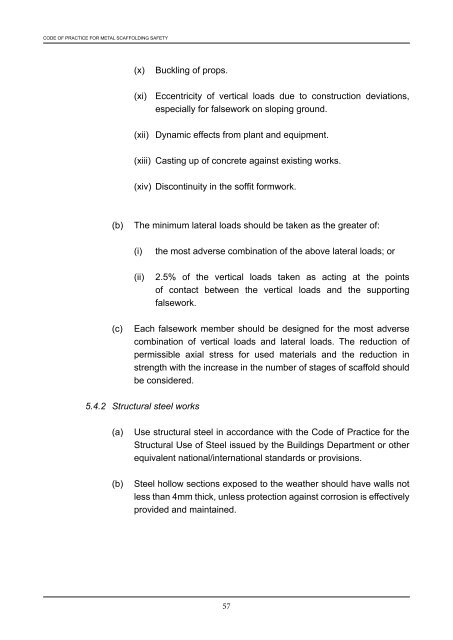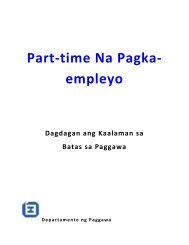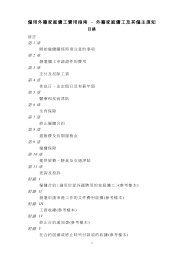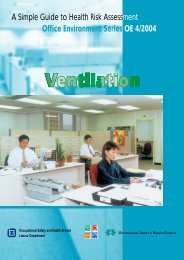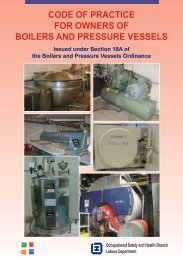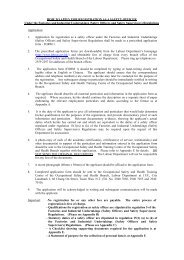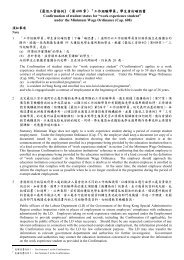CODE OF PRACTICE FOR METAL SCAFFOLDING SAFETY
CODE OF PRACTICE FOR METAL SCAFFOLDING SAFETY
CODE OF PRACTICE FOR METAL SCAFFOLDING SAFETY
Create successful ePaper yourself
Turn your PDF publications into a flip-book with our unique Google optimized e-Paper software.
<strong>CODE</strong> <strong>OF</strong> <strong>PRACTICE</strong> <strong>FOR</strong> <strong>METAL</strong> <strong>SCAFFOLDING</strong> <strong>SAFETY</strong><br />
(x) Buckling of props.<br />
(xi) Eccentricity of vertical loads due to construction deviations,<br />
especially for falsework on sloping ground.<br />
(xii) Dynamic effects from plant and equipment.<br />
(xiii) Casting up of concrete against existing works.<br />
(xiv) Discontinuity in the soffit formwork.<br />
(b) The minimum lateral loads should be taken as the greater of:<br />
(i) the most adverse combination of the above lateral loads; or<br />
(ii) 2.5% of the vertical loads taken as acting at the points<br />
of contact between the vertical loads and the supporting<br />
falsework.<br />
(c) Each falsework member should be designed for the most adverse<br />
combination of vertical loads and lateral loads. The reduction of<br />
permissible axial stress for used materials and the reduction in<br />
strength with the increase in the number of stages of scaffold should<br />
be considered.<br />
5.4.2 Structural steel works<br />
(a) Use structural steel in accordance with the Code of Practice for the<br />
Structural Use of Steel issued by the Buildings Department or other<br />
equivalent national/international standards or provisions.<br />
(b) Steel hollow sections exposed to the weather should have walls not<br />
less than 4mm thick, unless protection against corrosion is effectively<br />
provided and maintained.<br />
57


